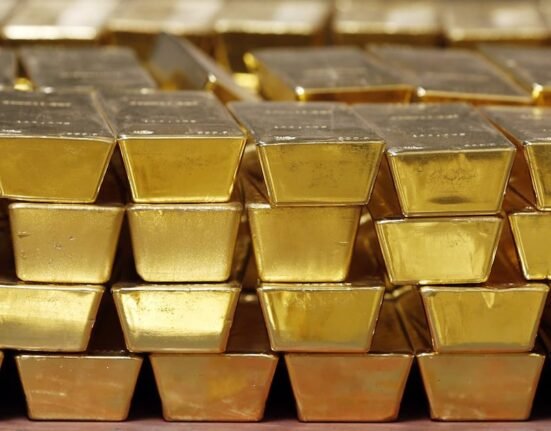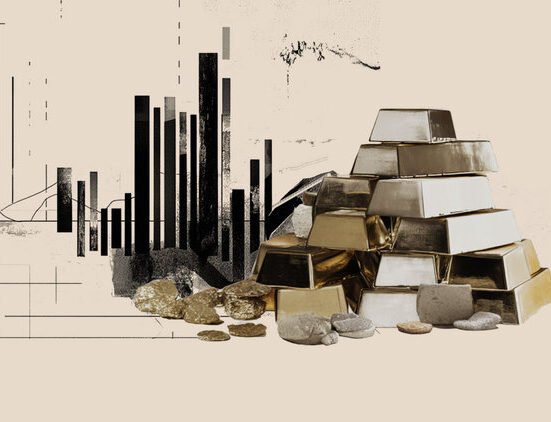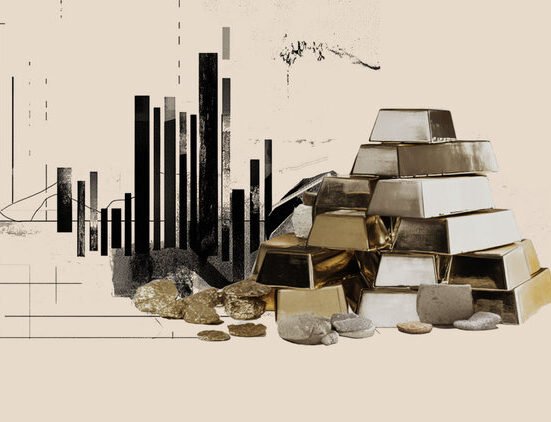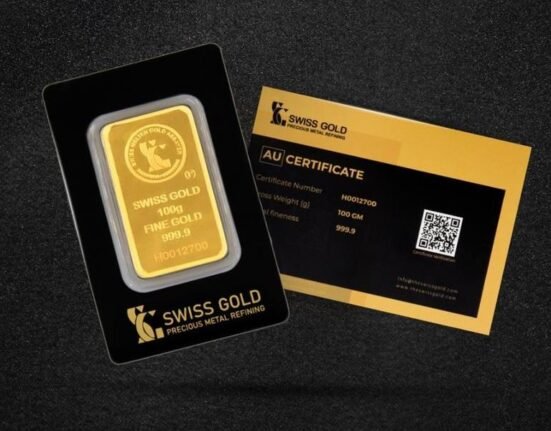Investors seeking refuge from the market volatility this year have been fleeing to a classic safe haven: gold.
That makes Thomas Kertsos, co-manager of First Eagle Gold Fund (SGGDX), a popular man. The fund, which invests in gold, gold-related securities, and other precious metals, is up 39% year-to-date — an impressive feat when the overall S&P 500 is down over 5% during the same period.
Gold has been on a winning streak in the last few months, but Kertsos has gone above and beyond to beat the returns of regular bullion. The fund’s return far exceeds the 26% gain in gold prices this year.
If you’re looking to diversify your holdings and protect your portfolio from market volatility, gold is a solid choice. But for those new to investing in the yellow metal, Kertsos shared three things to keep in mind.
Investors should still be cautious about a so-called safe-haven asset
The appeal of adding gold to your portfolio is to have an asset that isn’t closely correlated to the rest of the market.
Historically, that means in times of rising interest rates, gold prices have gone down. This inverse relationship is because gold itself doesn’t generate any yield, dividends, or cash flow. When rates rise, investors tend to prefer higher-yielding assets like stocks and bonds over holding gold.
Interest rates are higher now compared to the last few years, but that hasn’t stopped gold prices from defying gravity. Kertsos believes heightened geopolitical tensions are a big reason the yellow metal continues skyrocketing despite traditional economic headwinds.
“There has been a very strong geopolitical premium since that time that has been embedded in the price of gold,” Kertsos told BI.
Geopolitical uncertainty, combined with increased central bank buying activity and investors hedging against a potential recession, are all sending the price of gold even higher.
“These three drivers have changed the behavior of gold to be more resilient and appreciate even during traditional headwinds,” Kertsos said.
While Kertsos has seen increased interest in gold from clients, he warns investors about becoming too enthusiastic given these irregularities. As always, there’s risk associated with investing, and just because gold has done well recently doesn’t mean it’ll continue to rise nonstop.
“There’s a lot of excitement around gold, but clients should be very careful,” Kertsos said. “There has never been a better time to own gold in one’s fund as a potential hedge because of the record amount of uncertainty. On the other hand, there are conflicting trends in the short term that can even create decreases in the price of gold.”
Be selective with gold stocks
If you’re investing in gold stocks such as mining companies, Kertsos encourages caution. While gold stocks can offer price appreciation, the price can fluctuate more wildly than regular gold bullion.
“There is a very concentrated number of high-quality gold stocks, but there’s a very long tail of far lower-quality gold stocks that don’t necessarily deserve to be on our watch list,” Kertsos said.
“We try to have fairly long-duration investments, which means that we need companies that have long mine lives, depth in the management team, good sustainability practices, and also good balance sheets,” Kertsos said. “But to the extent that we cannot find any such company, we will keep our clients’ capital in gold bullion until such opportunity presents itself.”
To assess the quality of the gold mining companies, Kertsos models their performance under different gold prices to ensure they’re resilient to fluctuations in the underlying asset.
“We try to stress test the balance sheet and the cash cost curve of the gold company,” Kertsos said. “If the gold price goes lower by one, two, or three standard deviations, how does the gold stock behave?”
Investing in gold mines also requires due diligence beyond just looking at financial statements.
“We look at the geological risk, if it exists, with the deposit. If there is political risk, we will go fairly deep in assessing them with geologists, engineers, or political consultants,” Kertsos said.
Below are the fund’s top five holdings as of March 31, 2025, their weightings, and their performance over the last 12 months, as of April 29, 2025.
- Wheaton Precious Metals Corp (WPM); 11.3% weighting; 51.1% LTM return
- Gold bullion; 8.8% weighting; 42.9% LTM return
- Agnico Eagle Mines (AEM); 7% weighting; 77.8% LTM return
- North Star Resources (NESRF); 6.9% weighting; 38.2% LTM return
- Silver bullion; 6.6% weighting; 22.1% LTM return
How much gold should you hold?
Experts will give you varying answers to how much gold you should have in your portfolio.
For Kertsos, the sweet spot is between 10% to 15%.
“If you own less than 10%, then that may not be enough as a potential hedge, but anything more than 15% becomes more of a directional bet in the price of gold and a speculative rather than a strategic position as a potential hedge for capital preservation,” Kertsos said.








